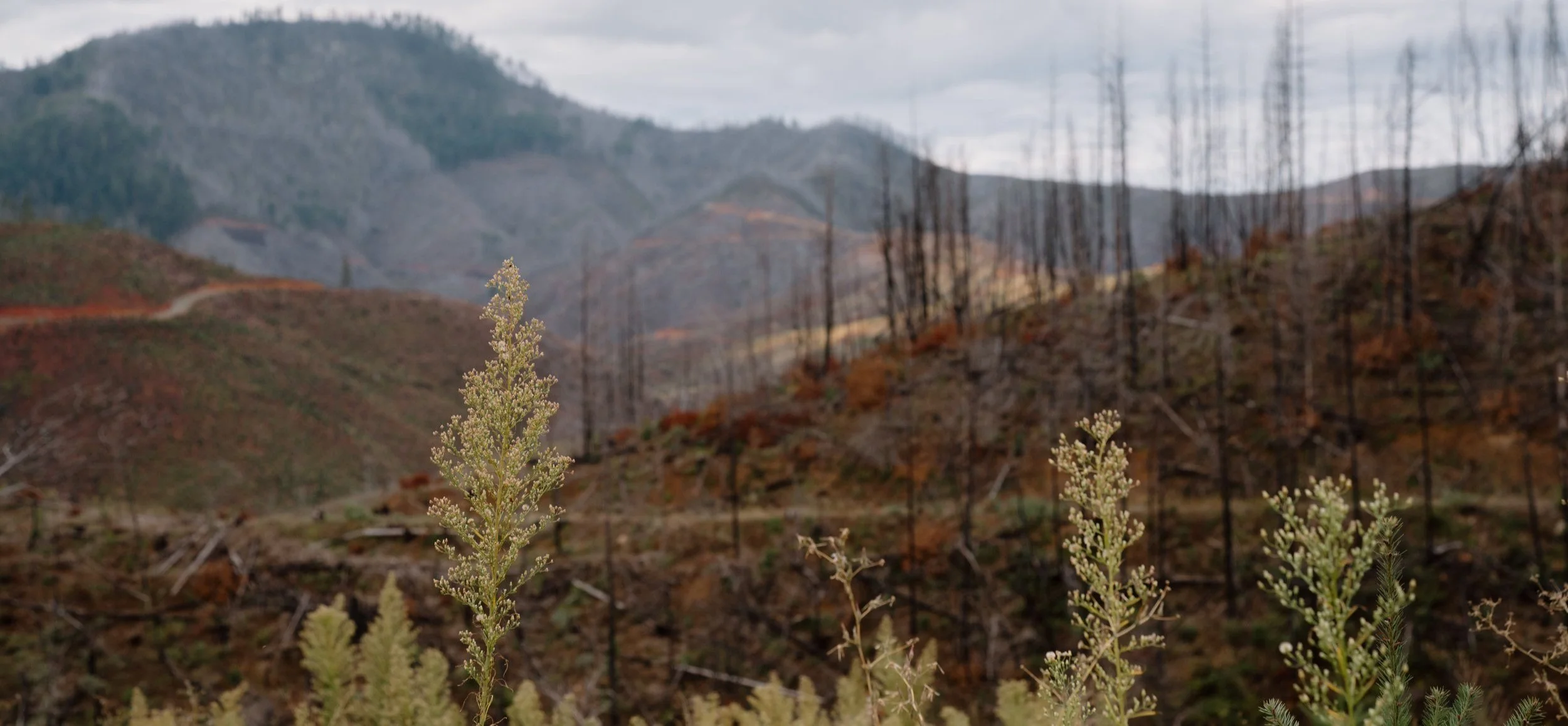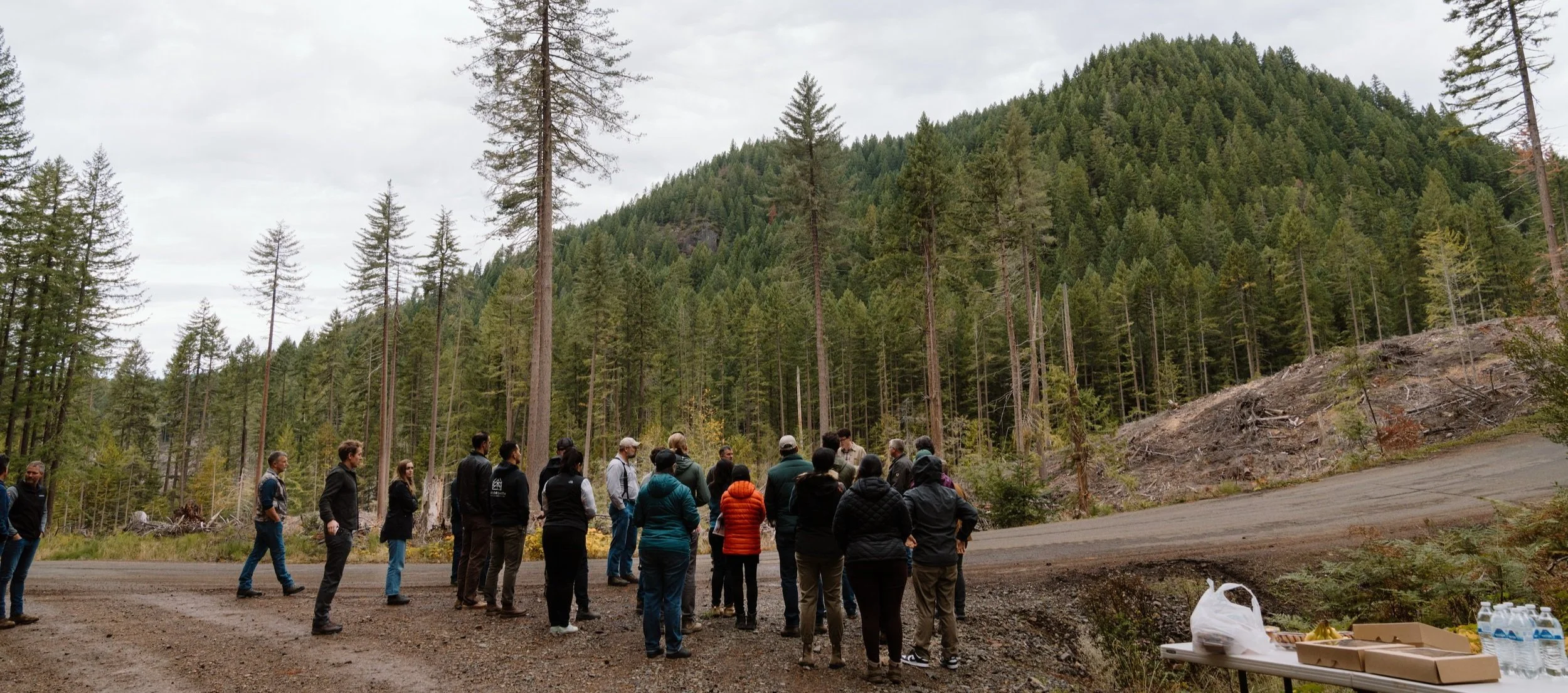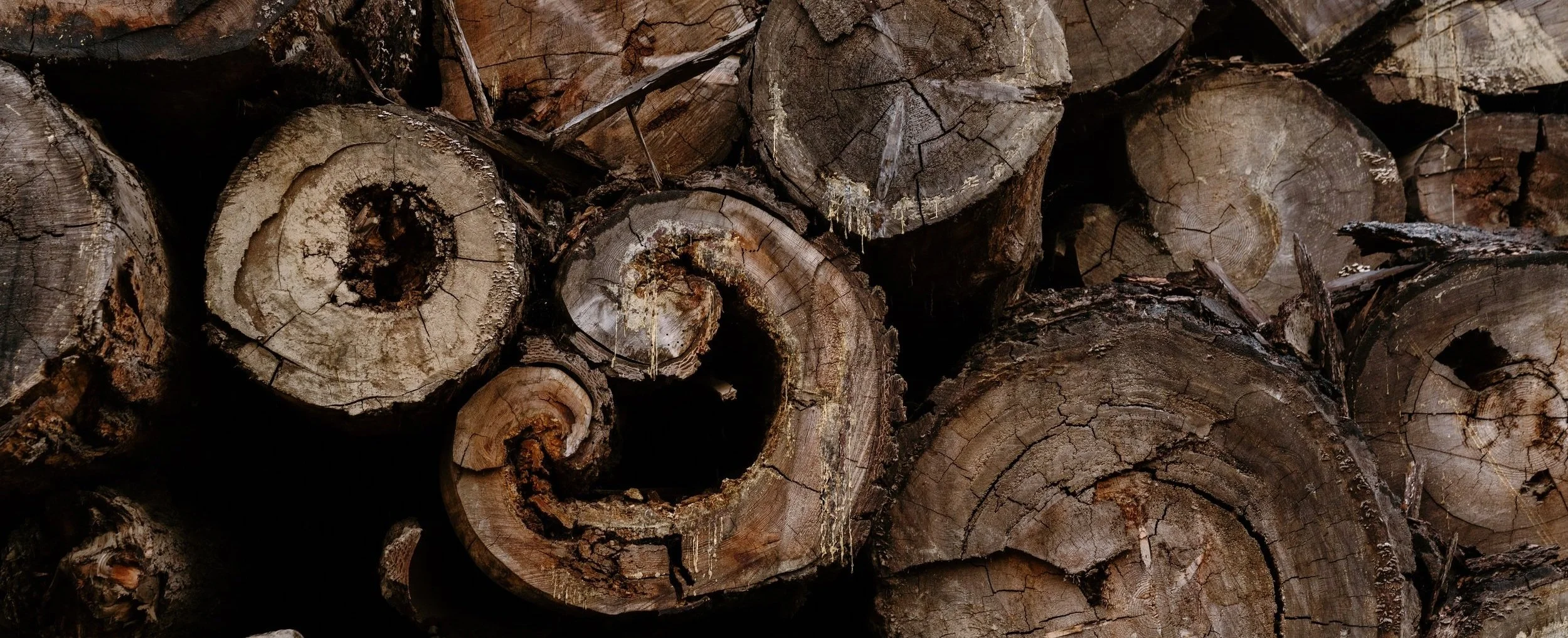Restoring Forests on Cow Creek Umpqua Tribes' Ancestral Lands
The Cow Creek Umpqua Tribe reclaimed some of their ancestral forests from the federal government in 2018. Photo credit: Sustainable Northwest; Logan Haven, Anvil Northwest.
The Milepost 97 wildfire consumed about 3,600 acres of Tribal forest in 2019. Photo credit: Sustainable Northwest; Logan Haven, Anvil Northwest.
In 2018, the Cow Creek Band of Umpqua Tribe of Indians took back control of 17,519 acres of their ancestral lands in Southwest Oregon following an act of Congress. The land had been heavily logged for several decades as part of the Bureau of Land Management’s O&C Lands, public forests mapped out in a checkerboard layout with private forests in between.
Upon reclaiming the land, the Cow Creek Umpqua Tribes was interested in restoring it to support clean water, wildlife habitat, cultural values, revenue, and employment opportunities. According to Cow Creek Umpqua’s forestry vision: “Tribal forests are working forests that are healthy, resilient, and well managed. The Tribe’s forests will always provide for and benefit future generations.”
Much of the Cow Creek Umpqua people’s ancestral forest has been clear-cut and replanted with a monoculture of Douglas fir trees. Photo credit: Sustainable Northwest; Logan Haven, Anvil Northwest.
But in 2019, the Milepost 97 wildfire consumed around 3,600 acres of Tribal land. Many of the trees in that area had already burned in a 1987 wildfire, and no active restoration had been done after that fire to reduce fuel loads in the forest.
The Cow Creek Umpqua Tribe decided it was time to put their principles into action and remove remaining downed trees that could be milled and sold, and employ active restoration efforts on the land.
The recently claimed forest had been logged by private timber companies in the past. Much of the land had stumps from large, old trees next to a monoculture of 60-80-year-old Douglas firs – indicating previous clearcuts and replanting in a monoculture.
On a recent tour of the Cow Creek Umpqua’s forest restoration work, natural resource managers for the Tribe described their efforts to restore historic oak savanna and meadow habitat. Photo credit: Sustainable Northwest; Logan Haven, Anvil Northwest.
But other areas had no stumps: only young Douglas-firs and a few oak trees. After extensive study, forestry experts within the Cow Creek Umpqua Tribal government soon realized that these areas were historically oak savanna meadows.
Tribal elders spoke of a time when game was abundant due to ample forage from bushes, grasses, and other meadow plants. But now, with little to no meadows left, the big game populations have also declined.
Cow Creek Umpqua Tribal leaders dedicated significant ecocultural restoration efforts in these areas that are focused on removing Douglas firs and other conifers, and promoting oaks, native grasses, and other meadow plants.
Some of Cow Creek Umpqua’s restoration efforts include returning cultural burning practices – particularly after thinning small trees and underbrush.
The Cow Creek Umpqua Tribe recently conducted a cultural burn to help restore some of their ancestral forest lands after decades of clearcuts and two catastrophic wildfires. Photo credit: Sustainable Northwest; Logan Haven, Anvil Northwest.
This practice is one that Tribes in Western Oregon have been doing for millenia, according to Dr. Cristina Eisenberg, the associate dean of inclusive excellence and director of Tribal initiatives at Oregon State University’s College of Forestry. Moreover, contrary to popular thinking, prescribed burning helps store carbon in the soil.
Soil samples indicated charcoal thousands of years old on Confederated Tribes of Coos, Lower Umpqua, and Siuslaw Tribes of Indians’ ancestral forests, indicating that their ancestors were not only doing prescribed burns – also known as cultural burning – but that the practice stores carbon in the form of charcoal.
These restoration efforts provided work to an estimated 267 people and provided material for their Tribally-owned mill – Umpqua Indian Forest Products.
Tribally-owned Umpqua Indian Forest Products mills and processes wood from the Cow Creek Umpqua Tribe’s harvests. Photo credit: Sustainable Northwest; Logan Haven, Anvil Northwest.
Some of that wood was used in constructing the Portland International Airport’s new main terminal.
The Cow Creek Umpqua Tribe’s journey from being stripped of their ancestral homelands to once again becoming active stewards of the land, forests and wildlife showcases the ability for people to manage natural resources in a sustainable way, which Sustainable Northwest defines as benefiting nature, people, and local economies.
The Cow Creek Umpqua Tribe is not only providing wood for their mill and for local green building projects; they are also restoring forest health and their peoples’ connection to and stewardship of the forest since time immemorial.
Timber harvested from the Cow Creek Umpqua’s recently reclaimed forests. Photo credit: Sustainable Northwest; Logan Haven, Anvil Northwest.







